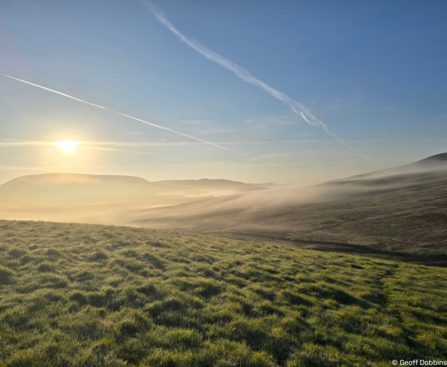“In every walk with nature one receives far more than he seeks”Father of National Parks
Access and Nature – The Balance
This quote speaks of our deep-rooted place within nature and the many benefits we get from immersing ourselves in it, something all too often overlooked and neglected in our modern lives.
In England, The Countryside Rights of Way Act 2000 (CRoW) was pivotal in formalising ‘open access’ and improved upon previous Public Rights of Way legislation that had given us our network of footpaths, bridleways and byways which allow us access to the countryside and nature.
For Northumberland Wildlife Trust access to nature is one of our core principles as an organisation and always has been. We do this through our nature reserves, allowing people to experience what John Muir did, and through our engagement work, educating people to the importance of John Muir’s statement and showing them nature is often closer than they realise.
However, we must balance that innate need, so eloquently put by Mr Muir, with our impact upon the very nature from which we gain so much. Unfortunately, access all too often causes disturbance.
On our nature reserves, we try to create this balance, controlling and focusing access to certain areas, enabling other areas to be free of disturbance. We do this primarily through infrastructure. Different reserves and habitats require different approaches, depending on visitor numbers, potential for disturbance and how great an impact that disturbance would have. Our larger, wilder upland sites are mostly CRoW Open Access land and have lower visitor numbers. Whereas more visited coastal, urban or especially sensitive sites require more consideration. Boardwalks over wetlands and peat bogs prevent trampling and erosion of fragile habitats whilst allowing you to see the unique plants and animals (as well as keeping your feet dry). Hides, and their screened approaches, mean you can closely view birds and mammals without them even knowing you are there. Even simple paths through woodlands and across hillsides concentrate visitor impact to a minimised area, leaving the wider habitat undisturbed, giving plants, birds, mammals, reptiles and insects the space they need. Space which is very much at a premium on our tiny island.
And just a quick word about signs. We don’t like putting them up, they detract from natural surroundings and nobody likes being told what to do. However, in certain circumstances it is really our only option to prevent disturbance of sensitive and vulnerable areas. Please take notice of signs!
As individuals, organisations, countries and a species we need to strike this balance between access and nature. We don’t always get it right, but we should learn from our mistakes and those of others, at every level. Ultimately there is a need for personal responsibility and, as a movement, we need to ensure everyone is aware of and empowered to accept and understand that responsibility.
Today we need access to nature more than ever – but we must always remember the level of responsibility that requires. So, to steal the slogan of an entirely different campaign – Enjoy Responsibly!

Landscape for #WilderWednesday. Photo by Geoff Dobbins.

